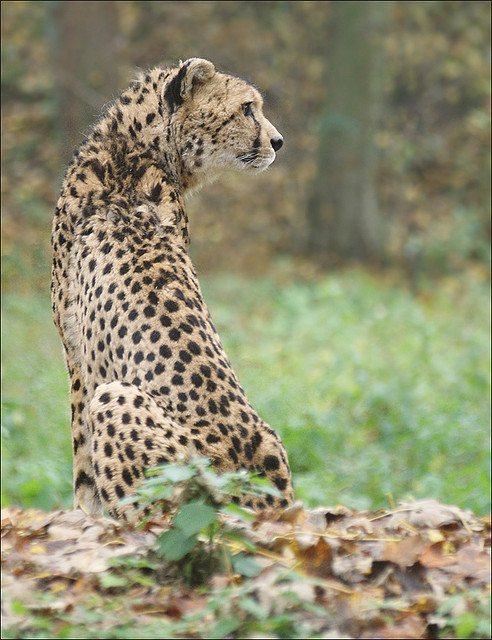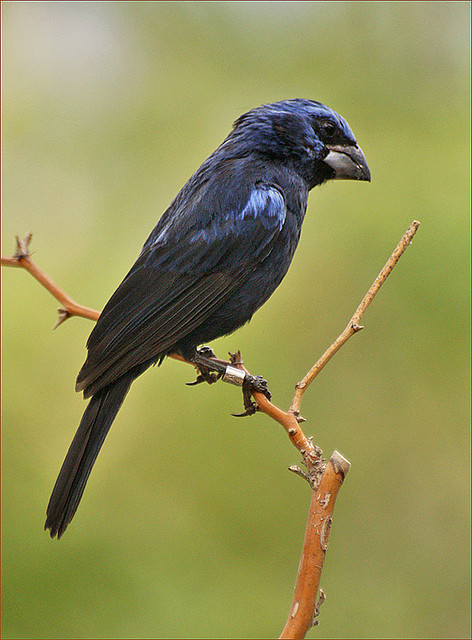#burgers zoo
Cheetah 2byFoto Martien on Flickr.
Via Flickr:
Cheetah in the Safaripark of Burgers Zoo in Arnhem, the Netherlands.
The cheetah (Acinonyx jubatus) is an atypical member of the cat family that is unique in its speed, while lacking climbing abilities. Therefore it is placed in its own genus, Acinonyx.
It is the fastest land animal, reaching speeds between 112 and 120 km/h in short bursts covering distances up to 460 m, and has the ability to accelerate from 0 to 110 km/h in three seconds, faster than most supercars.
The adult cheetah weighs from 40 to 65 kg. Its total body length is from 115 to 150 cm, while the tail can measure up to 85 cm in length. Males tend to be slightly larger than females and have slightly bigger heads. The cheetah’s chest is deep and its waist is narrow. The coarse, short fur of the cheetah is tan with round black spots measuring from 2 to 3 cm across, affording it some camouflage while hunting. There are no spots on its white underside, but the tail has spots, which merge to form four to six dark rings at the end. The cheetah has a small head with high-set eyes.
There are several geographically isolated populations of cheetah, all of which are found in Africa or Southwestern Asia. The cheetah likes to live in an open biotope, such as semi-desert, prairie, and thick brush, though it can be found in a variety of habitats.
Info:en.wikipedia.org/wiki/Cheetah
Post link
Camouflaged cheetahbyFoto Martien on Flickr.
Via Flickr:
Cheetah in the Safaripark of Burgers Zoo in Arnhem, the Netherlands.
The cheetah (Acinonyx jubatus) is an atypical member of the cat family that is unique in its speed, while lacking climbing abilities. Therefore it is placed in its own genus, Acinonyx.
It is the fastest land animal, reaching speeds between 112 and 120 km/h in short bursts covering distances up to 460 m, and has the ability to accelerate from 0 to 110 km/h in three seconds, faster than most supercars.
The adult cheetah weighs from 40 to 65 kg. Its total body length is from 115 to 150 cm, while the tail can measure up to 85 cm in length. Males tend to be slightly larger than females and have slightly bigger heads. The cheetah’s chest is deep and its waist is narrow. The coarse, short fur of the cheetah is tan with round black spots measuring from 2 to 3 cm across, affording it some camouflage while hunting. There are no spots on its white underside, but the tail has spots, which merge to form four to six dark rings at the end. The cheetah has a small head with high-set eyes.
There are several geographically isolated populations of cheetah, all of which are found in Africa or Southwestern Asia. The cheetah likes to live in an open biotope, such as semi-desert, prairie, and thick brush, though it can be found in a variety of habitats.
Info:en.wikipedia.org/wiki/Cheetah
Post link
Ultramarine GrosbeakbyFoto Martien on Flickr.
Via Flickr:
Male Ultramarine Grosbeak in Burgers Desert of Burgers Zoo in Arnhem, the Netherlands.
Mannetje Ultramarijnbisschop in Burgers Desert van Burgers Zoo in Arnhem, Nederland.)
The Ultramarine Grosbeak (Cyanocompsa brissonii, old Passerina brissonii) is a species of cardinal (bird) in the Cardinalidae family.
It is found in Argentina, Bolivia, Brazil, Colombia, Paraguay, Uruguay, and Venezuela.
Its natural habitats are subtropical or tropical dry forests, subtropical or tropical moist lowland forests, and subtropical or tropical dry shrubland.
Info: Wikipedia
Post link






